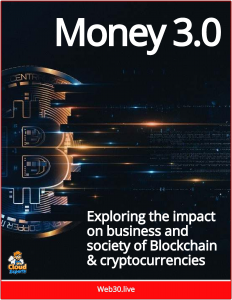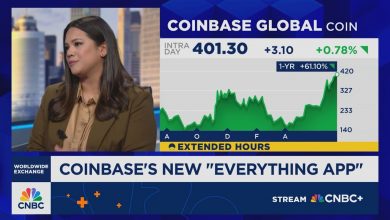Stablecoins Will Allow New Types of Financial Products to be Built
Stablecoins’ predictable value—often tied to assets like the U.S. dollar—makes them ideal for financial products requiring stability, unlike volatile cryptocurrencies like Bitcoin.
 Stablecoins, cryptocurrencies pegged to stable assets like fiat currencies or commodities, are unlocking the potential for innovative financial products by combining blockchain’s efficiency, programmability, and accessibility with the stability of traditional assets.
Stablecoins, cryptocurrencies pegged to stable assets like fiat currencies or commodities, are unlocking the potential for innovative financial products by combining blockchain’s efficiency, programmability, and accessibility with the stability of traditional assets.
Their ability to maintain consistent value, facilitate instant transactions, and operate on decentralized or permissioned networks enables the creation of new financial tools that address inefficiencies in traditional systems and cater to both institutional and retail users.
Nikil Viswanathan, Alchemy CEO, talks the passage of the Genius Act, the growth of stablecoin adoption, AI integration and more.
Stablecoins
Stablecoins’ predictable value—often tied to assets like the U.S. dollar—makes them ideal for financial products requiring stability, unlike volatile cryptocurrencies like Bitcoin. This stability allows them to serve as a reliable medium for transactions, lending, and savings products.
For instance, stablecoins eliminate the delays and high fees of traditional cross-border payments, which cost merchants $187.2 billion in processing fees in 2024, per the Nilson Report. By enabling near-instant, low-cost transfers 24/7, stablecoins underpin products like real-time global payroll systems or peer-to-peer remittance platforms, which are faster and cheaper than services like SWIFT or Western Union.
Companies like Visa and Mastercard are already integrating stablecoins into their networks to facilitate cross-border B2B payments, demonstrating their potential to streamline corporate finance.
Programmable Money
The programmability of stablecoins, enabled by blockchain’s smart contract functionality, opens the door to automated and customizable financial products.
Smart contracts allow developers to embed conditions into transactions, such as “if-this-then-that” logic, creating opportunities for innovative tools. For example, stablecoin-based lending platforms can automate loan disbursements and repayments based on predefined criteria, reducing manual oversight and counterparty risk.
JPMorgan’s JPM Coin, used by Siemens for automated treasury management, showcases how programmable stablecoins can optimize corporate cash flows. Similarly, decentralized finance (DeFi) platforms like Aave and Compound use stablecoins like USDC to offer decentralized lending and borrowing, where users earn interest or access loans without intermediaries, disrupting traditional banking models.
Tokenizing Real World Assets
Stablecoins also enable the tokenization of real-world assets (RWAs), creating new investment and liquidity opportunities. By representing assets like real estate, bonds, or commodities as stablecoin-linked tokens on a blockchain, financial institutions can fractionalize ownership, making high-value assets accessible to smaller investors.
For instance, tokenized U.S. Treasury securities, piloted by firms like Ondo Finance with JPMorgan’s involvement, allow investors to hold fractional shares of bonds in stablecoin form, tradable 24/7. This democratizes access to assets previously restricted to wealthy or institutional investors and enhances liquidity in markets traditionally limited by trading hours or intermediaries. Citi estimates the tokenized asset market could reach $5 trillion by 2030, highlighting the scale of this transformation.
DeFi
Another emerging product is stablecoin-based savings accounts, which offer higher yields than traditional bank accounts by leveraging DeFi protocols. Platforms like Anchor Protocol (before its collapse) allowed users to deposit stablecoins like UST and earn up to 20% annual yields through algorithmic lending markets.
While risks like protocol failures remain, regulated institutions are exploring similar models. For example, JPMorgan’s JPMD deposit token, launched on Coinbase’s Base blockchain, allows institutional clients to earn interest on tokenized deposits, blending traditional banking’s security with blockchain’s efficiency. These products appeal to users seeking passive income without exposure to crypto volatility.
Cross-Border Interoperability
Stablecoins also facilitate cross-chain and cross-border interoperability, enabling financial products that operate seamlessly across jurisdictions and platforms. Multi-chain stablecoins like USDC, supported on Ethereum, Solana, and other blockchains, allow developers to build applications that work across ecosystems, such as global payment apps or decentralized exchanges.
This interoperability supports products like instant cross-border micropayments for gig workers or content creators, bypassing the high fees of traditional payment processors. Visa’s experiments with stablecoin settlements on Solana exemplify how such interoperability can enhance payment infrastructure.
Conclusion
However, these innovations come with challenges. Regulatory scrutiny, particularly around anti-money laundering and reserve backing, could limit the scope of some products, as seen with the U.S. GENIUS Act’s requirements for stablecoin issuers.
Additionally, centralized stablecoins like JPMD, restricted to vetted users, may prioritize institutional control over decentralization, clashing with crypto’s ethos and potentially limiting retail access.
Despite these hurdles, stablecoins’ ability to combine stability, programmability, and global reach is driving a wave of financial products—from automated lending and tokenized assets to high-yield savings and instant global payments—that promise to reshape the financial landscape.



